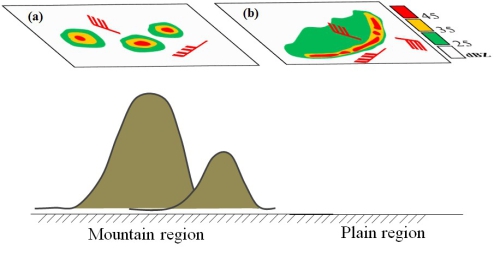Developments in meteorological satellites and radar have promoted the study of the organization and evolution of convective systems. The evolution of convective systems is affected by dynamic and thermodynamic conditions. The organizational modes of convection can to some extent affect the type of weather events. Severe convective wind (SCW) events occur frequently over North China, but which of the primary organizational modes are responsible for SCW events over North China? A paper published in Advances in Atmospheric Sciences sought to solve this problem.

Severe wind events for mountain and plain regions over North China are mainly associated with cluster cells and squall lines, respectively (Image by YANG Xinlin)
The Severe Weather Prediction Center of the China Meteorological Administration defines any wind gust ≥ 17 m s?1 as a severe wind event. In the study, if a severe wind event was associated with severe thunderstorms, it was classified as an SCW event. Based on some previous studies of classification schemes, the major organizational modes were classified into six categories: individual cells, cluster cells, broken line, nonlinear-shaped, squall lines, and bow echo.
The topography may be an important factor in the organizational modes for SCW events over North China. The highest numbers of SCW events were over the mountains, where which were generally associated with disorganized systems of cluster cells. In contrast, SCW events associated with linear systems occurred mainly over the plains. Values of convective available potential energy, precipitable water, 0–3-km shear, and 0–6-km shear, were demonstrably larger over the plains than over the mountains, which have had an evident effect on the organizational modes of SCW events.
Reference
Yang, X. L., and J. H. Sun, 2018: Organizational modes of severe wind-producing convective systems over North China. Adv. Atmos. Sci., 35(5), https://doi.org/10.1007/s00376-017-7114-2 .
Contact: LIN Zheng, jennylin@mail.iap.ac.cn
